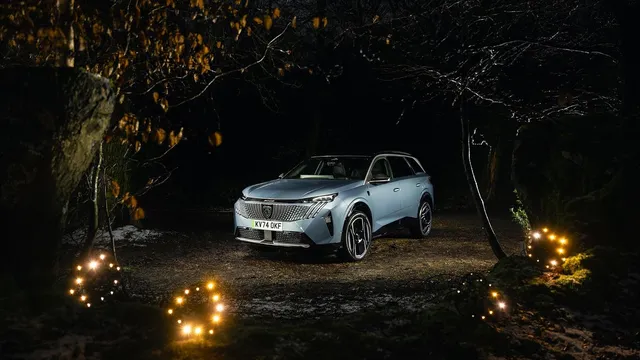
Peugeot explores plant-powered energy with microbial fuel cells
2025-05-10 00:00- Peugeot and Nova Innova demonstrated microbial fuel cell technology for a lighting project in the Netherlands.
- Microbial fuel cells harness energy from bacteria found in organic waste and other environments.
- The initiative will promote a sustainable approach to energy production at home and in communities.
Express your sentiment!
Insights
In the Netherlands, innovative product design studio Nova Innova has collaborated with Peugeot to utilize microbial fuel cell technology for a photography project. This experiment effectively demonstrated how bacteria obtained from plants can produce electricity, illuminating the potential for integrating this technology into daily life. Bacteria, found in various environments such as water and organic waste, generate small amounts of electricity. The microbial fuel cell technology is not only CO2 negative but also scalable, potentially allowing gardens, forests, and greenhouses to produce energy for both their needs and the local community’s. Nova Innova's first product, the Living Light Lamp, provides a practical application of this concept by powering indoor lighting through a single plant. The collaboration aimed to raise awareness about the potential of microbial fuel cells to power small applications at home and in urban environments. Van Oers from Nova Innova highlighted that as energy output increases, the possibility of larger applications could emerge in the future, benefiting residential energy consumption. Their vision includes an ecosystem where diverse energy sources—including microbes, plants, and natural elements—work together to create resilient energy solutions. Future developments also include floating microbial fuel cells designed to monitor water quality, with a deployment plan for five installations in the Netherlands to assess how microbes in water can harness energy. In addition to lighting, there are plans to develop products that can further utilize organic waste, suggesting that even household kitchen waste can have a role in energy production. While this technology is still in its nascent stages, its development represents a step toward tapping into previously overlooked energy resources and addressing energy challenges sustainably. As society increasingly seeks renewable energy solutions, the findings from this project resonate strongly with ongoing discussions around eco-friendly power sources and a sustainable future. The potential for microbial fuel cells extends beyond individual homes; large-scale applications could mean entire neighborhoods could draw power from local gardens or greenhouses. This synergy not only supports energy independence but also encourages spending time in nature and caring for the environment. As the initiative progresses, it promises a future where everyday activities contribute to energy generation, transforming our approach to both consumption and conservation.
Contexts
Microbial fuel cells (MFCs) represent an innovative and sustainable technology that converts chemical energy into electrical energy using microorganisms. This process relies on the unique metabolic pathways of specific bacteria, which break down organic matter and release electrons in the process. In an MFC, these electrons travel through an external circuit to an anode, generating electricity, while the metabolic byproducts are further processed and can be reused. The versatility of MFC technology lies in its applicability to various waste materials, including agricultural residues, wastewater, and even organic household waste. This provides a dual benefit: waste management and energy production, making MFCs a valuable option for addressing environmental challenges and contributing to energy sustainability. The use of MFCs is expanding across multiple sectors, demonstrating potential in wastewater treatment systems. Traditional wastewater treatment methods are often energy-intensive and result in the generation of sludge, which must be further processed. MFCs not only treat wastewater by degrading organic pollutants but also harness the energy released during this degradation to produce electricity. This technology can minimize energy costs associated with treatment facilities and reduce the environmental impact of waste disposal. Additionally, MFCs can be employed in decentralized wastewater treatment systems that cater to rural or remote areas, where access to the electrical grid is limited, effectively enhancing energy access in underdeveloped regions. A growing area of interest is the integration of MFC technology in microbial electrolysis cells (MECs), which are designed to generate hydrogen from organic substrates. By supplying an external voltage, MECs can drive microbial metabolism to produce hydrogen as a clean energy carrier. This synergy of using MFCs with MECs reinforces the potential for sustainable energy solutions, particularly in supporting the hydrogen economy. Moreover, researchers are exploring the scalability of MFC technology for potential deployment in real-world applications, such as powering sensors in environmental monitoring and even small-scale electronics. In summary, microbial fuel cells are a revolutionary technology harnessing the power of microorganisms to generate energy while treating waste materials. This dual-functionality paves the way for a multitude of applications, from wastewater treatment to energy production, with the potential for significant reductions in greenhouse gas emissions and energy costs. As research progresses, the commercialization of MFC technology will likely lead to its greater integration into waste management systems and energy production strategies, marking a step towards a more sustainable future.